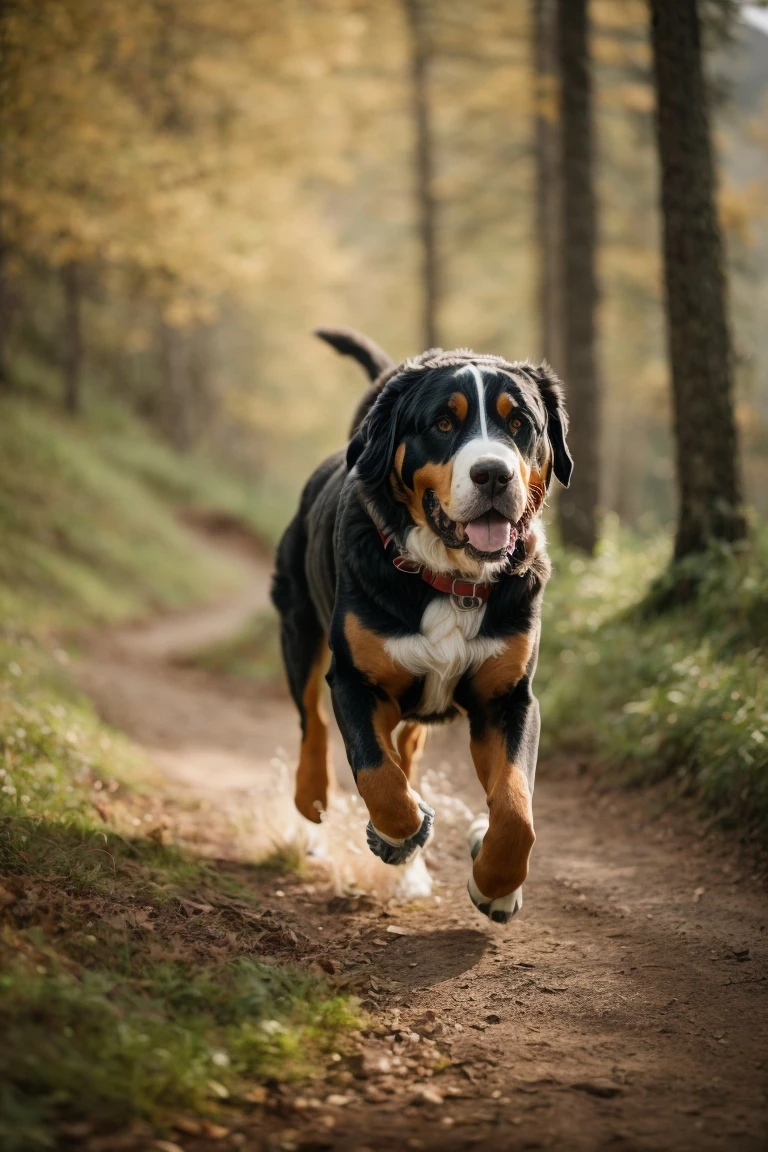Exercising a Greater Swiss Mountain Dog: A Guide to Keeping Your Dog Healthy and Happy

The Greater Swiss Mountain Dog is a large, muscular working breed that thrives with regular exercise. Providing adequate daily physical activity and mental stimulation is key to having a happy, well-behaved Swissy. This guide covers how much exercise they need, types of exercise to engage them, and tips for safe, effective exercise.
How Much Exercise Does a Greater Swiss Mountain Dog Need?
This energetic breed requires a moderate to high amount of daily exercise:
- Adult Greater Swiss Mountain Dogs need 60-80 minutes per day of exercise.
- Senior Swissys over 8 years old do best with 30-60 minutes daily.
- Puppies under 18 months need 20-40 minutes once or twice daily. Avoid too much strenuous exercise while joints are still developing.
Ideally, exercise should be spread throughout the day rather than all at once. Swissys were bred to work hard all day long!
Types of Suitable Exercises
Given their herding and drafting origins, Swissies enjoy a mix of both physical and mental exercises. Here are some activities they typically relish:
- Walking: A moderate-paced walk, perhaps with some off-leash time in a safe area.
- Hiking: Their Alpine roots make them excellent hiking companions.
- Tug-of-War: Engaging their strength in a fun manner.
- Fetch: Though not all Swissies might be fans, it’s worth a try.
- Obedience Training: Stimulates their brain.
- Cart-Pulling: This traditional work can be turned into a fun and rewarding exercise, with the right equipment and training.
- Agility: While not their prime forte, many Swissies enjoy a basic agility course.
Step-by-Step Guide to Exercising Your Swissy
A structured exercise routine can help ensure your Swissy gets the physical activity they need:
- Daily Walks:
- Begin with a warm-up walk, progressing to a brisk pace.
- Allow some sniffing breaks for mental stimulation.
- End with a cool-down walk.
- Play Sessions:
- Engage in games like fetch or tug-of-war.
- Keep sessions short and fun.
- Always use dog-safe toys.
- Training:
- Dedicate some time daily for obedience or trick training.
- Use positive reinforcement with treats and praise.
- Weekend Activities:
- Consider longer hikes or cart-pulling sessions.
- Ensure you have the appropriate gear and safety measures in place.
- Socialization:
- Organize playdates with other dogs.
- Visiting dog parks can be a treat, but always monitor interactions.
- Rest Days:
- Like humans, dogs also benefit from a rest day where the physical activity is light, focusing more on relaxation and cuddles.
Common Problems and Troubleshooting
Problem: Overexertion Signs (Limping, Excessive Panting, Reluctance to Move)
- Solution: Ensure you’re not pushing your Swissy too hard. Provide ample rest, and if the problem persists, consult your vet.
Problem: Boredom or Destructive Behavior
- Solution: Incorporate more mental stimulation exercises like puzzle toys, scent games, or advanced training.
Problem: Gaining Weight
- Solution: Re-evaluate their diet and exercise routine. Ensure you're not overfeeding, and gradually increase their activity level. Consultation with a vet is recommended.
Problem: Reluctance to Exercise
- Solution: Rule out any health issues first. It might be a phase, or perhaps they’re bored of the routine. Try introducing a new exercise or toy.
Conclusion
A well-exercised Greater Swiss Mountain Dog is a happy and healthy one. Their exercise needs, rooted in their history as working dogs, make them fantastic companions for active individuals and families. With patience, consistency, and understanding, you'll foster not only a well-exercised dog but also an enduring bond with your Swissy.